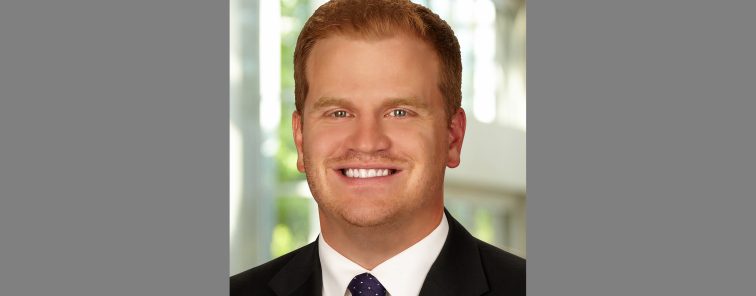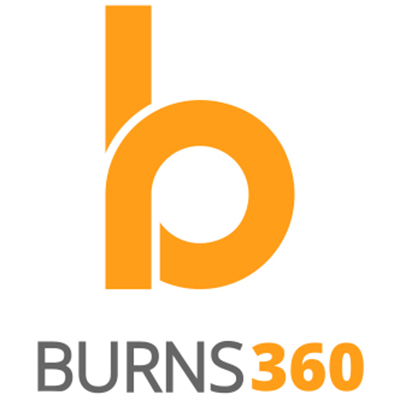
Behind the Headlines with Erik Wheater
This article was originally posted on Cision.com by Julia Rabin.
Moving around effectively in the media industry can be daunting. How can you become an asset to your next company or position?
Erik Wheater, account executive at Burns360, details his transition from a five-year career in television news to the PR agency life.
In this interview, Erik discusses moving from one media world to the next. He reveals how his background in journalism has shaped his view of the industry, his growing appreciation for PR professionals and gives insight into how journalists in the TV industry truly want to be pitched.
You recently transitioned from your role in television news to PR. What motivated that transition and what are you looking forward to accomplishing with Burns360?
Simply put, I was looking for the next professional challenge and felt that PR gave me the best opportunity to use the skill set I developed as a journalist to begin an exciting new career. Through working in television, I have become a strong writer, learned the story angles that capture an audience, learned how to shoot and edit video, and understand the value of social media. These are all critical skills for a successful PR professional.
While Burns360 is an agency that is embracing new PR concepts like digital and content marketing, its belief that journalism is essential to PR has never wavered. My ultimate goal is to use my background as an anchor/reporter to help tell the stories of my clients in compelling, visual ways and to help them gain the coverage and exposure they seek.
How has your background in journalism influenced your abilities in PR? What has been most helpful? Have there been any drawbacks?
My background as a journalist is how I define my identity when it comes to my PR career. My boss, Michael Burns, encourages me to think like a reporter each day I come to the office. When I work with a client, I try to consider their story in a visual way that not only makes for an excellent news pitch, but also doubles as compelling social media and web content.
Journalism has also influenced my career in terms of the contacts I developed while working in news media. Now, almost every time I make a news pitch, I can find some connection to a reporter, producer or editor at the outlet where I am seeking coverage for a client. There are hundreds of thousands of people who identify as journalists, but in reality, the business is very tight knit.
What is the biggest lesson you have learned as a member of a PR agency that you wish you had known while working as a reporter?
I wish I would have realized how hard PR professionals actually work. As a journalist, there were days when I wouldn’t give the folks following up on news releases the time of day. Little did I know how much work actually went into developing their pitch, the release, the corresponding photos and more. Looking back, I would have taken the time to respond to more PR professionals and given pitches more consideration.
What are some of the biggest pitching mistakes brands make?
I could write a book on this topic.
- Mass mailings = your news release getting deleted. I know it takes time to personalize pitches, but as a journalist, I was far more likely to respond to an email that mentioned me specifically, a story I had done in the past, or a mutual connection the sender and I had. Journalists receive A LOT of news releases each day. PR professionals that put in a little extra effort are more likely to get the coverage they are looking for.
- Don’t make a reporter bend over backwards to tell YOUR story. These days, journalists are often asked to cover multiple stories a day with limited resources to meet deadlines. Make sure all of your ducks are in a row and express that all potential interview subjects are immediately available and you have photos and video ready to send. The easier you make telling the story, the more likely it is to get covered.
- Make it easy for a reporter to get a hold of you. When I was reporting, if I couldn’t get a hold of the PR professional or interview subject in one call, I generally moved on to the next topic. No reporter wants to call the front desk and be transferred four times to track you down. Leave your cell phone. Make sure the reporter knows you are available at all hours- it is a guaranteed way to increase coverage.
- Be courteous to the journalist’s schedule. A major advantage of having worked in a newsroom is that I understand the timing there; I know when things are dead and when people are scrambling to meet deadlines. No reporter wants to listen to a news pitch at 4:30, when they’re clambering to get a story on air for the 5:00 p.m. news. I recommend sending releases and following up at times like 10 a.m. to noon when a reporter is still planning their day. Also, if you’re willing to wake up and call at 1 or 2 in the morning, chances are you’re going to get a producer struggling to stay awake who is putting together the morning show. That is surprisingly a great time to pitch!
- Use common sense and understand the media outlet you are sending the pitch to. A television station isn’t the right place to send a news release about the hiring of a mid-level position or your company meeting its quarterly financial goals. Only contact a TV news station if your story can be told visually and there is the potential for video to support the information.
What role does social media play in your job? How has social media transformed strategic communication?
I explain the need for social media to my clients like this: Social media platforms serve as microphones to get your message to the public. As a journalist, Twitter, Facebook and LinkedIn gave me extra ways to plug my stories and to encourage people to watch our newscasts. It’s the exact same thing in public relations. Companies who aren’t active on social media are missing out on an easy way to get their message to potential customers, friends of the company and the media.
With so many diverse platforms, how should brands choose which ones to include in their communication strategy?
At Burns360, we believe that a communication strategy has to have it all. It’s no longer enough to simply do a TV interview or post a blog on your website. Companies need to consider things like search engine optimization so they’re easy to find on Google, have an easily navigable website, create compelling digital marketing content like videos for social media, and of course, traditional methods like news placement to reach the maximum amount of people.
How do you envision the future of PR and media relations? How can brands keep up?
PR professionals will have to continuously adapt to the various platforms with which news is delivered. PR professionals also need to focus on building relationships with bloggers and media influencers on social media, as these mediums are starting to see their traffic sky-rocket.
Rapid Fire Round
- My favorite electronic device is…my iPhone, and it’s not even close. If I’m not sleeping or exercising, it’s glued to my hand.
- My ideal day off would include…18 holes at the golf course followed by a few beers with friends on a rooftop patio.
- Some items on my bucket list are…to see the Northern Lights and visit all 50 states! I have always had the travel bug and would love to explore more of the world.
- If I could join any music group, it would be…can we reverse back to the late 90’s? N’Sync it is.
- My hidden talent is…I am a true asset to any trivia team. I can usually lock down the sports and U.S. history questions.
- If I could live anywhere, it would be…Dallas! I am new to the area and pretty happy here! I always told myself I would never move to a big city, but Dallas still has a Midwest feel to me and I don’t feel overwhelmed at all. I could do Pawley’s Island, South Carolina, too. I love beaches that haven’t been taken over by tourists.


